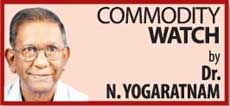Reply To:
Name - Reply Comment
Last Updated : 2024-04-25 04:37:00
 By Dr. N.Yogaratnam
By Dr. N.Yogaratnam diseases/pests, better adaptability to climate stress and are location-specific. Do not worship any particular breeding strategy, but select the one which can help to achieve the desired end-goal speedily and surely. Research should continue its clone-centric approach, but it should make use of molecular breeding techniques such as marker-assisted selection to shorten the breeding cycle and get more number of agronomically important genes into an elite clone. Further genetic improvement in Hevea (eg. Breaking the yield ceiling or pyramiding of multiple traits in one single clone etc.) may be difficult through conventional breeding/selection route.
diseases/pests, better adaptability to climate stress and are location-specific. Do not worship any particular breeding strategy, but select the one which can help to achieve the desired end-goal speedily and surely. Research should continue its clone-centric approach, but it should make use of molecular breeding techniques such as marker-assisted selection to shorten the breeding cycle and get more number of agronomically important genes into an elite clone. Further genetic improvement in Hevea (eg. Breaking the yield ceiling or pyramiding of multiple traits in one single clone etc.) may be difficult through conventional breeding/selection route.
Add comment
Comments will be edited (grammar, spelling and slang) and authorized at the discretion of Daily Mirror online. The website also has the right not to publish selected comments.
Reply To:
Name - Reply Comment
US authorities are currently reviewing the manifest of every cargo aboard MV
On March 26, a couple arriving from Thailand was arrested with 88 live animal
According to villagers from Naula-Moragolla out of 105 families 80 can afford
Is the situation in Sri Lanka so grim that locals harbour hope that they coul